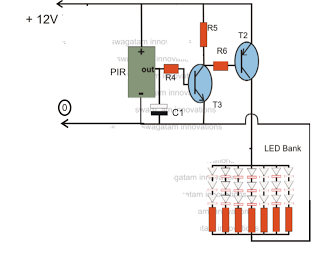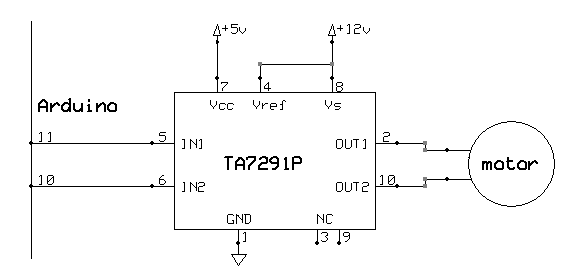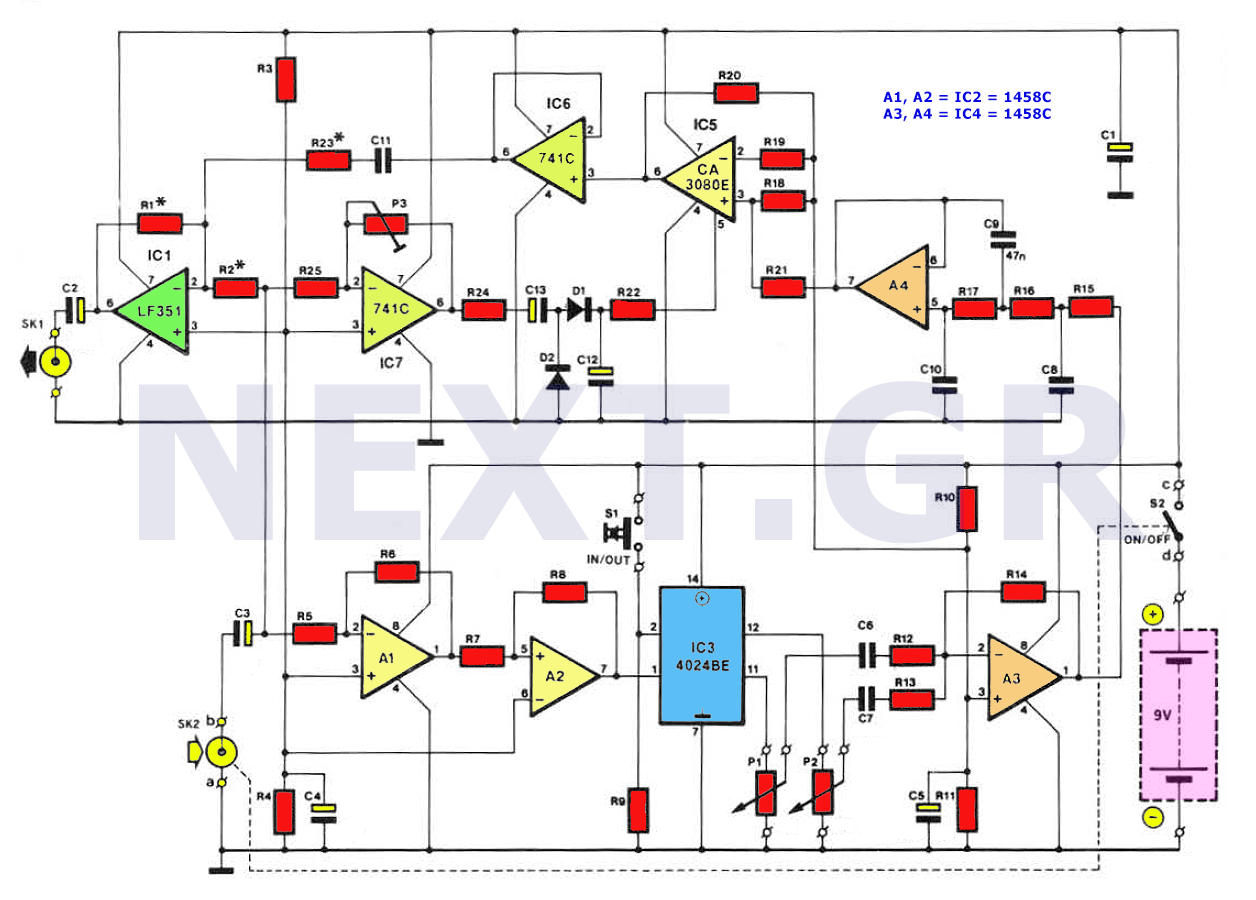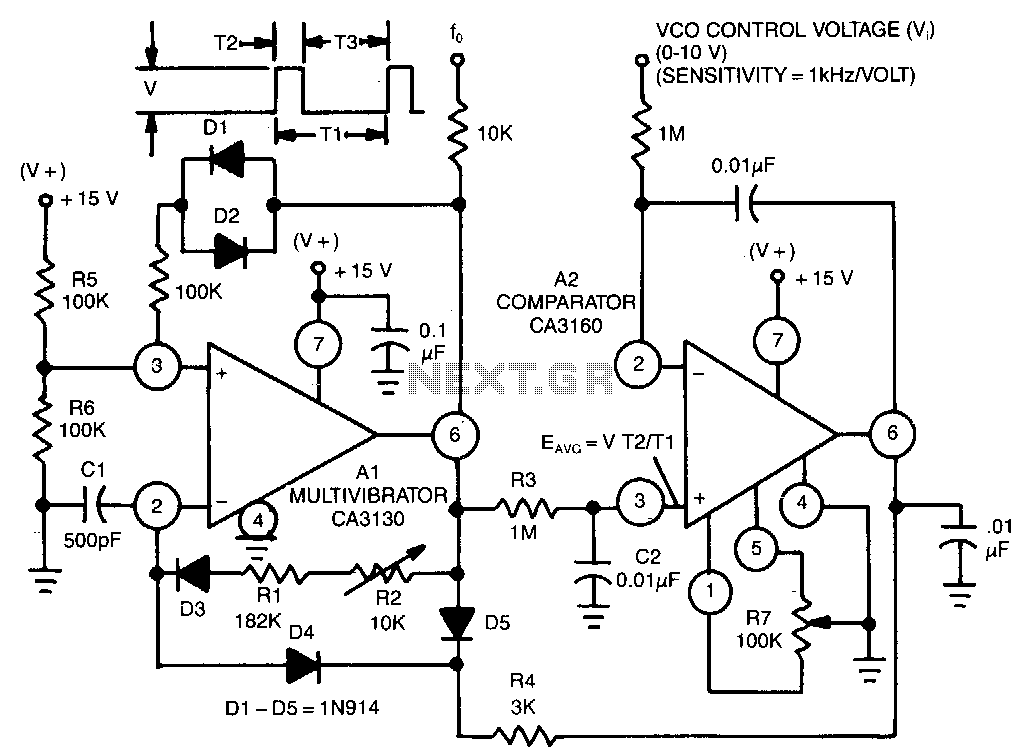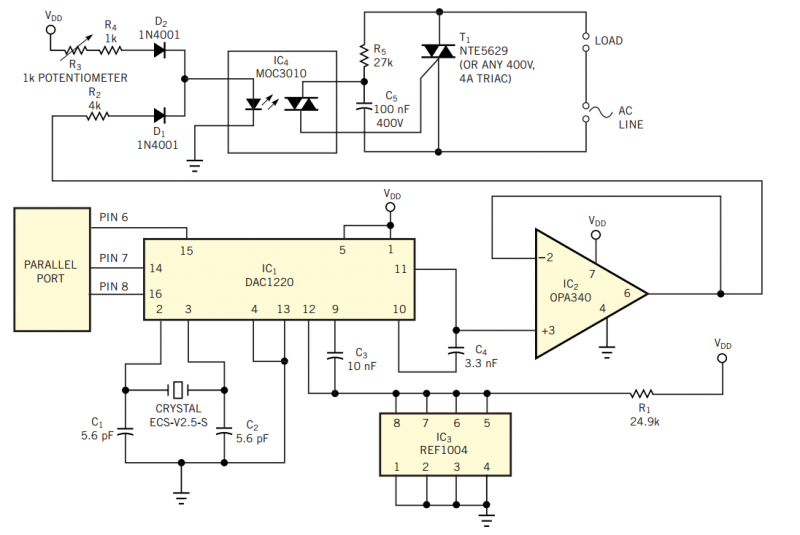
Guitar Control

The IC1A operational amplifier is configured as an inverting amplifier, with its gain determined by a three-way switch that connects different resistor values in parallel to resistor R4. This input stage is succeeded by an active three-band tone control stage, which maintains a unity gain when the controls are positioned at their center settings, and is constructed using IC1B.
The circuit utilizes IC1A as the primary amplification stage, which is essential for processing audio signals. In the inverting amplifier configuration, the gain is defined by the formula -R_f/R_in, where R_f is the feedback resistor and R_in is the input resistor. The three-way switch allows for versatile gain settings by connecting various resistors in parallel with R4, thus providing flexibility in adjusting the amplification level based on the application requirements.
Following the inverting amplifier stage, the signal is processed by an active three-band tone control circuit built around IC1B. This stage is designed to adjust the bass, midrange, and treble frequencies of the audio signal, allowing for enhanced sound customization. The tone control circuit typically employs capacitors and resistors configured in such a way as to create band-pass filters for each frequency range. When the tone controls are set to their center position, the circuit is designed to achieve a unity gain, ensuring that the audio signal passes through without any amplification or attenuation.
Overall, this schematic effectively combines an inverting amplifier with a sophisticated tone control stage, making it suitable for various audio applications where signal manipulation and quality are paramount. The careful selection of component values and configurations allows for a high degree of control over the audio output, catering to diverse listening preferences.IC1A op-amp is wired as an inverting amplifier, having its gain set by a three ways switch inserting different value resistors in parallel to R4. This input stage is followed by an active three-band tone control stage having unity gain when controls are set in their center position and built around IC1B.
🔗 External reference
The circuit utilizes IC1A as the primary amplification stage, which is essential for processing audio signals. In the inverting amplifier configuration, the gain is defined by the formula -R_f/R_in, where R_f is the feedback resistor and R_in is the input resistor. The three-way switch allows for versatile gain settings by connecting various resistors in parallel with R4, thus providing flexibility in adjusting the amplification level based on the application requirements.
Following the inverting amplifier stage, the signal is processed by an active three-band tone control circuit built around IC1B. This stage is designed to adjust the bass, midrange, and treble frequencies of the audio signal, allowing for enhanced sound customization. The tone control circuit typically employs capacitors and resistors configured in such a way as to create band-pass filters for each frequency range. When the tone controls are set to their center position, the circuit is designed to achieve a unity gain, ensuring that the audio signal passes through without any amplification or attenuation.
Overall, this schematic effectively combines an inverting amplifier with a sophisticated tone control stage, making it suitable for various audio applications where signal manipulation and quality are paramount. The careful selection of component values and configurations allows for a high degree of control over the audio output, catering to diverse listening preferences.IC1A op-amp is wired as an inverting amplifier, having its gain set by a three ways switch inserting different value resistors in parallel to R4. This input stage is followed by an active three-band tone control stage having unity gain when controls are set in their center position and built around IC1B.
🔗 External reference
